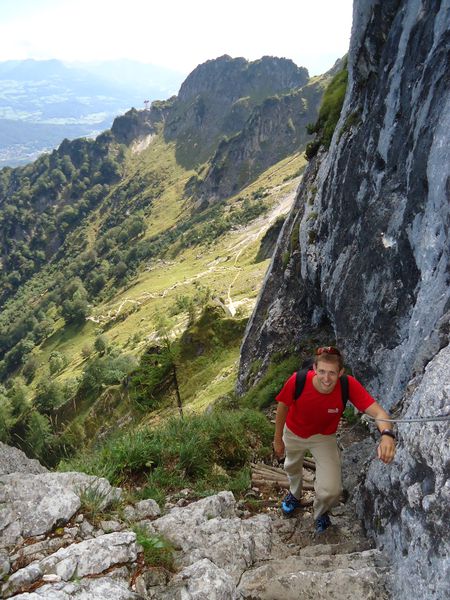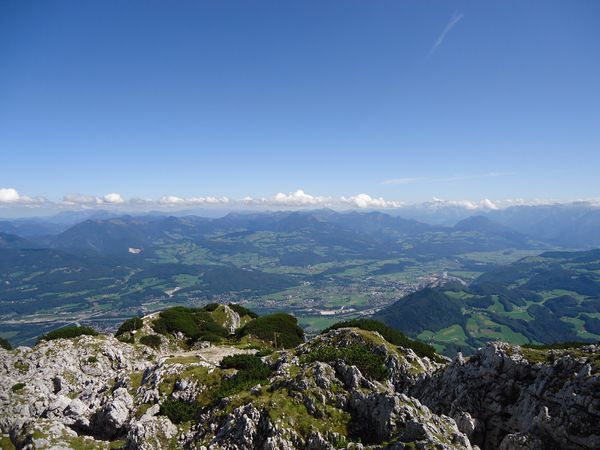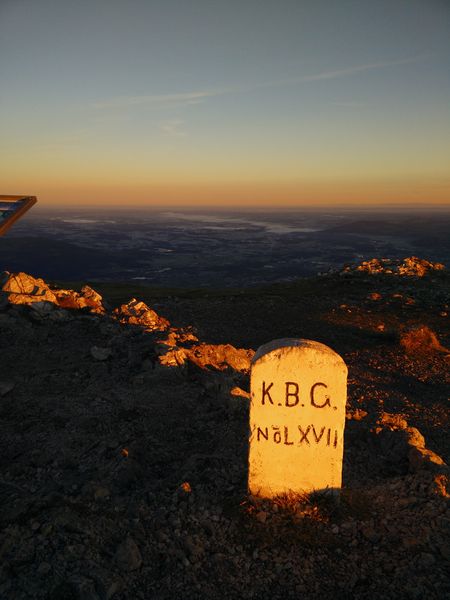There are two classic routes to the top of Salzburger Hochthron, Dopplersteig and Reitsteig. Both start 7 kilometres north of the city centre in Glanegg, and you cannot call yourself a true Salzburger if you didn’t go through their leg-crushing ascent at least once. Dopplersteig is the shorter, steeper, more exposed, challenging, and, ultimately, more rewarding one of the two.
Dopplersteig is named after Ludwig Doppler, a member of a stonemason family from Viehausen near Salzburg. An avid alpinist, he developed the route in the 1870s. His main aim was to connect the famous Kolowrat cave with the summits of Geiereck and Salzburger Hochthron and make both of them accesible in a day hike from Salzburg. Ludwig was also the eldest son of famous Salzburg-born mathematician and physicist Christian Doppler who first described an effect taught in every undergraduate physics class: the Doppler shift.
Like many locals, I’ve hiked Dopplersteig countless times. In the midday summer heat or during a chill autumn night, reaching the peak before sunrise. At a leisurely pace or with my heart pounding through a sweat-drenched shirt. At some point, I felt I must have known each rock along the way.
The trail starts steep right away. Stairs have been cut into the rock, each roughly twice as high as what you’d be used to from your average building staircase. “A perfect workout for my glutes”, I ponder as my heart rate begins to soar. A handful of flat stretches are a welcome rest for my legs, but I soon encounter the second landmark feature of the trail: wooden ladders, lots and lots of them. They’re placed against the rock at such an angle, making it unclear whether you should walk up straight or use your hands for support. The path cuts across mid-sized boulders between these sections. It’s a beautiful yet monotonous climb, and I begin to long for reaching the forest’s edge, which marks the transition to the next stage of the trail.
Above the tree line, a handful of paths meander up the Obere Rossiten. The local mountain organization struggles to keep new “trails” from popping up each year, encouraging hikers to stick to the main path. A few minutes later, I reach my first resting spot, a serene place, especially in the early hours of the morning. I fill my bottle at a water source and marvel at the city lights below. The rock face of Geiereck sits ominously to my left, and it’s not at all obvious where a trail should connect from here to the summit.
I soon continue through the early morning dusk and reach the signature part of Dopplersteig a few minutes later. Another set of steep stairs leads straight up the mountain, maybe half a meter wide, with a vertical rock wall to the left and an almost vertical drop on the right. There are a few ropes to hold on to and a disturbingly large amount of memorials. Wooden or metal crosses and plaques with photographs pay tribute to the unfortunate victims of the mountain. Once in a while, I can see a candle shining through a crack in the rock.
Nonetheless, it’s my favourite part of the hike and focused on the placement of my steps, I quickly gain altitude. My heart is pounding heavily. Another set of wooden stairs marks the final meters of this section. It’s slightly less exposed, so I pick up the pace, crawling on all fours to a plateau at Taxhamer Kreuz where the trail re-connects with Reitsteig and continues relatively simple to the Zeppezauerhaus cabin and the gondola station at Geiereck.
When hiking during the day, this is where the vibe of the trail changes. While it’s primarily avid hikers coming up Dopplersteig (and almost no one going down this way), you’ll find a parade of flip-flops and sandals taking the short 15-minute walk from the cable car station to the Salzburger Hochthron summit. Therefore, the lack of tourists is another benefit of setting out for this hike before sunrise. You’ll find a handful of hikers at most, and sometimes a couple might crawl out of a tent they’ve pitched on the summit the night before. Apart from this, I often have the moment all to myself.
I relish the peaceful moments before sunrise. Sitting on top of the mountain, watching the city lights below slowly making way for the first rays of sunlight. I stay until the first (sometimes the second) cable car of the day to bring me down the mountain. My bicycle parked below, I make my way to work. A shower and a small breakfast later my work day begins at 10 am, but I have already accomplished everything.















